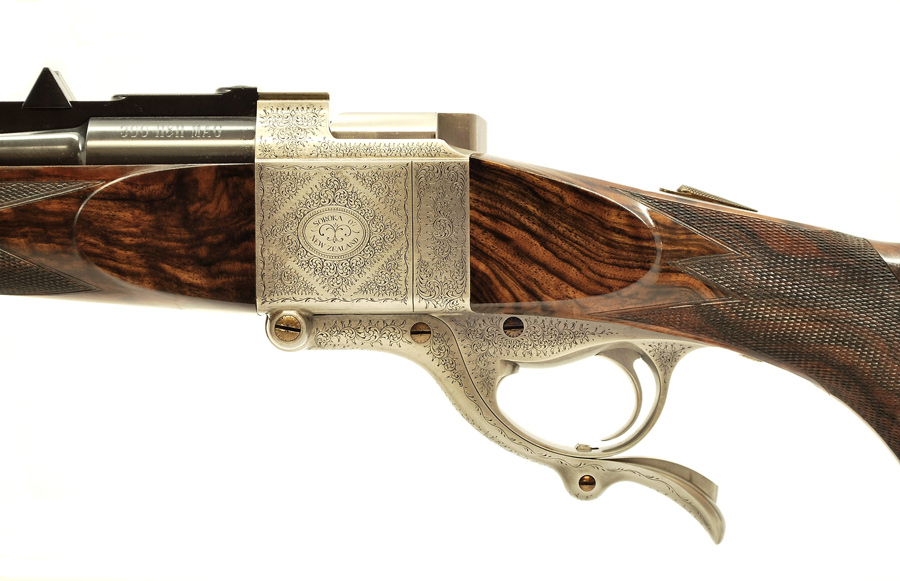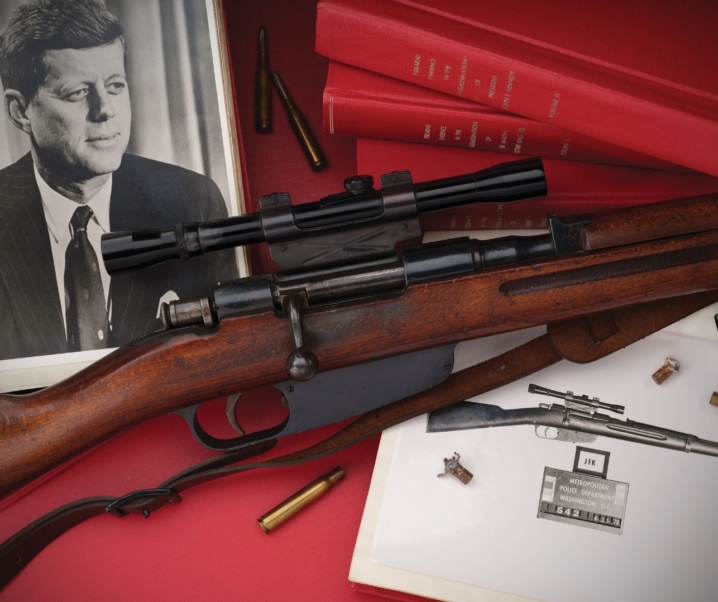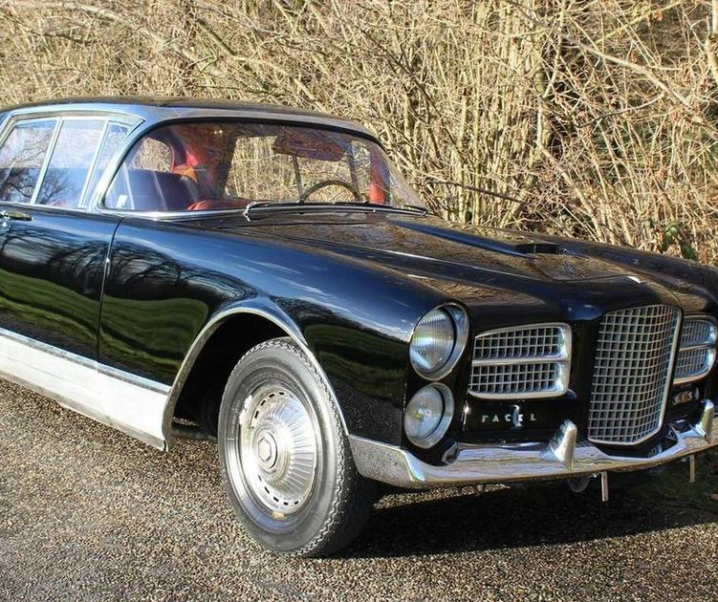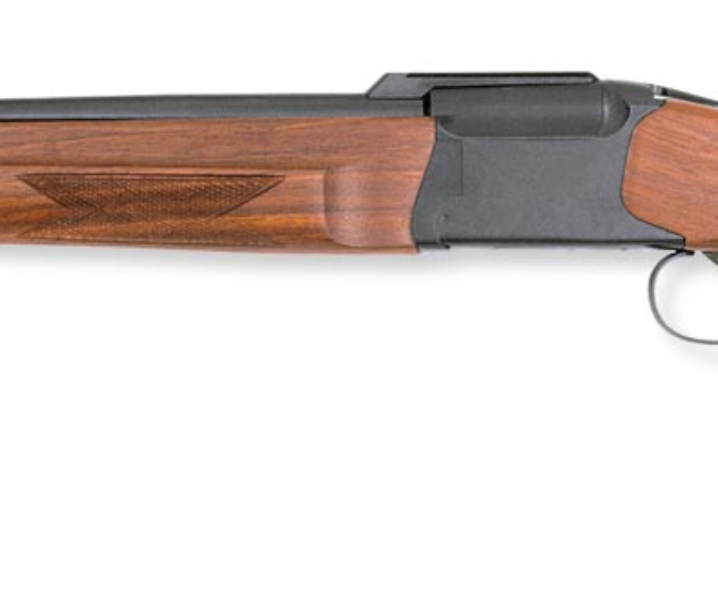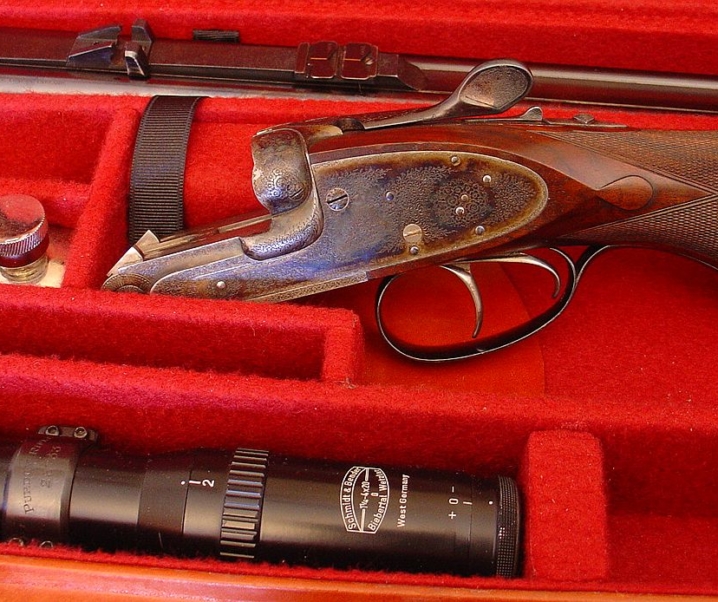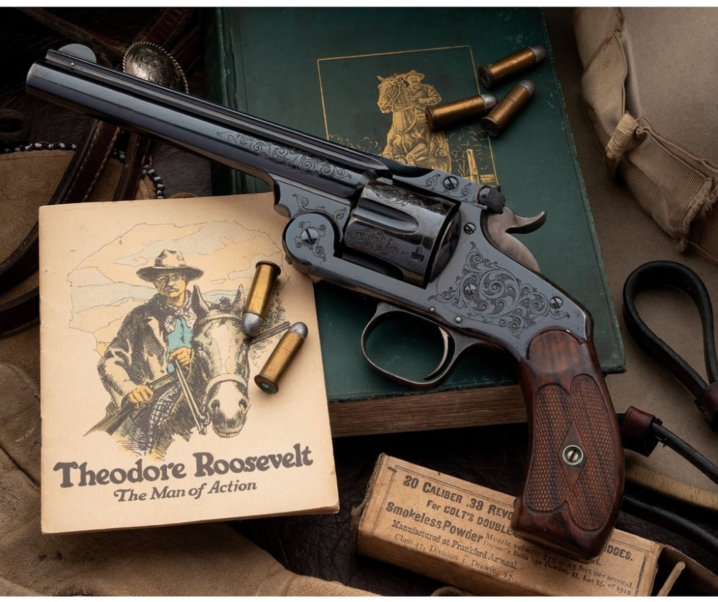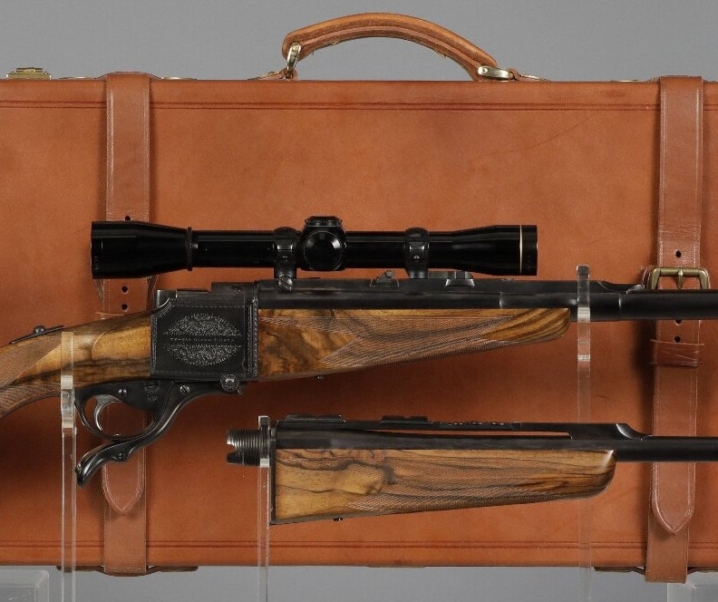Scotsman John Farquharson (1833-1893) patented his legendary falling block action in 1872. He’d been working on improving single shot actions for a while including the Martini but his new design for his falling block action was the breakthrough. By 1877 Bristol gunmaker George Gibbs, his foreman Thomas Pitt and William Ellis Metford (the inventor of the Metford rifling as used in the Lee Metford rifle), had become involved and the actions and rifles with Metford rifled barrels were made by Gibbs at his Bristol shop. These were black powder rifles chambered for proprietary cartridges such as the 461 No. 1, 461 No. 2, 360 No. 3 Express and 360 No. 4 Rook. A “Rook” cartridge was a small game cartridge, a Rook being a raven or crow. Imagine, shooting a crow with a .360 caliber rifle, these guys were the “varmint” hunters of old.

After John Farquharson’s patent expired his design effectively became “public domain” and many gunmakers began making rifles and improving on his action. Actions were made in Belgium and imported into Britain where makers such as Webley & Scott and W.J. Jeffrey (creator of the .404 Jeffrey etc.) would make rifles around them beginning in the late 1800’s around 1895. As this marks the beginning of the smokeless or “nitro” powder era the Farquharson action was improved for nitro powders and was chambered for the classic nitro hunting rifle calibers including the rimmed 6.5mm Mannlicher (.256 Flanged), .303 British, .470 Jeffrey Express, .500 Nitro Express and even the big game cartridge for the stoutest of heart – the .600 Nitro Express. There were also models made in small bore calibers such as .22 rimfire, 297/230 Morris (originally made for the Morris Tube adaptor), .22 Centrefire and a number of others.
These were the Farquharson’s so favored by legendary African big game hunter Frederick Courtenay Selous, in suitable African calibers.
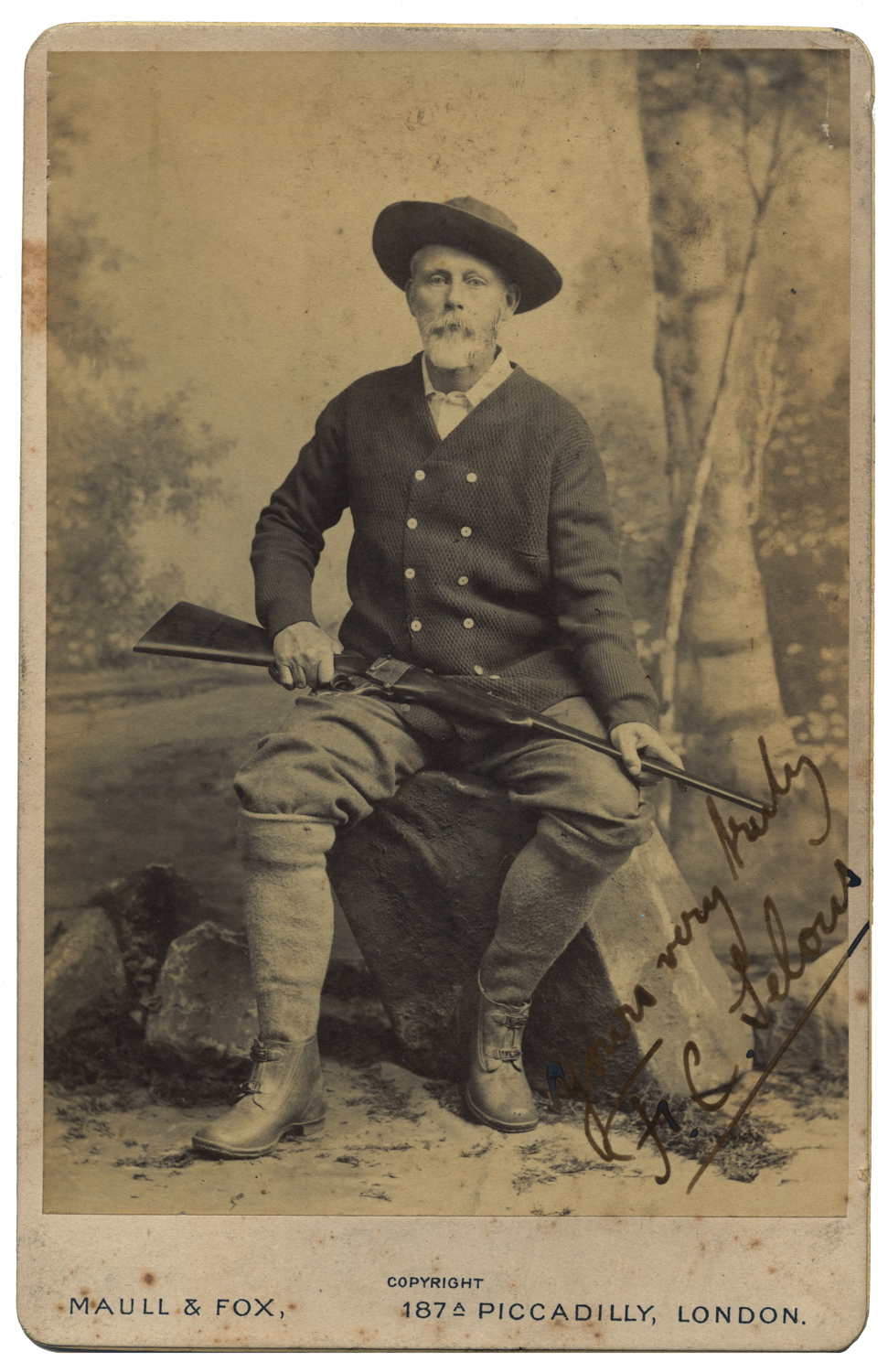
It was the Farquharson action that captured the imagination of American gunmaker Bill Ruger and inspired him to create his Ruger No. 1. It was a bold move that surprised many in a firearms scene in which so many thought that the future would be filled with semi-automatic rifles, even those for hunting. But Bill Ruger was a classic rifle enthusiast as well as being a classic car collector. He understood the truth in the old indian saying “One shot, dead deer; two shots, maybe; three shots, never”. From a purely practical viewpoint if you are after an elusive quarry then one shot is all you are likely to get and you absolutely have to make that one count. But there was much more in Bill Ruger’s thinking. He also understood that hunting is not just about the function of going out and harvesting the deer. That its a wholly more complex and deep experience than that, one that cannot be explained to non-hunters in terms they will be able to understand. So he created a rifle that made it affordable for an ordinary hunter to own and use a rifle that all at once evokes the history, aesthetics, culture and folklore of hunting. The rifle was a success and is still with us today, albeit in limited production. Bill Ruger’s No. 1 was and is a great rifle – but it wasn’t a Farquharson despite having been inspired by them.
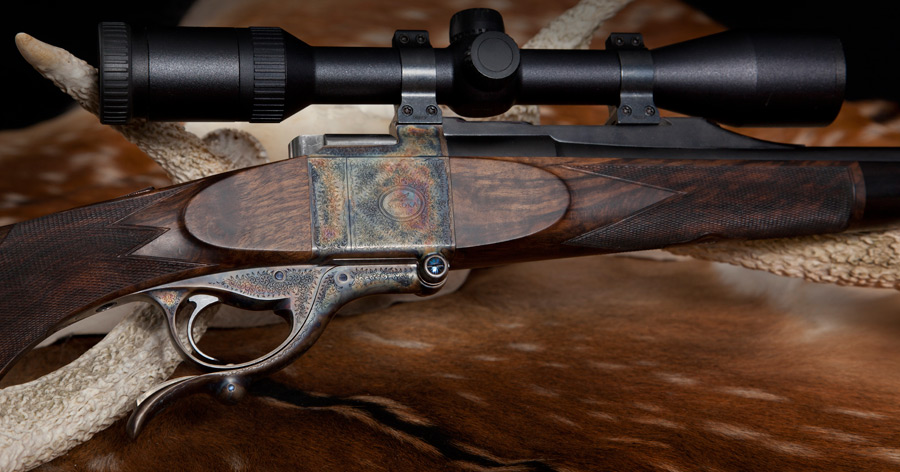
Way down in the “Land of the Long White Cloud” (i.e. New Zealand), there lived a young man named Glenn Soroka who liked to go out into the rugged mountains in search of Himalayan Tahr and Alpine Chamois. This is New Zealand’s mountain country where the Hobbit and Lord of the Rings movies were made, stunningly beautiful landscapes, and demanding of the person who would go and hunt there. Glen’s friend who introduced him to Tahr hunting used a Ruger No. 1 chambered for the wildcat 338/404 (i.e. the .404 Jeffrey necked down to use .338″ bullets). Shots in the mountains were long, and this was in the days before range finders. Glen saw the practical benefits of the Ruger No. 1 action, its short length meant you could use a longer barrel, its slim, flat sided configuration made it comfortable to carry. It would also happily accommodate a heavier profile barrel whilst still keeping rifle weight reasonable. Before long Glen had built a .308/404 with a 27″ barrel and was taking the long range shots reliably, helped by that 165gn boat tail exiting the muzzle at a crisp 3600fps.

As so often happens we may have something that works really well, but “the grass is always greener on the other side of the fence” and sooner or later we might just find ourselves hankering after something new. For Glen Soroka that something new was a Dakota Model 10. But after using it for a couple of years Glen realized that, gorgeous and expensive though the Dakota was, that he was looking for something else. That something else was going to be a Farquharson. Glen had been shooting the Ruger No. 1 and the Dakota Model 10 for thirteen years before it struck him that what he’d wanted all along was a Farquharson. No one else was making them so he decided to bite the bullet and make his own.
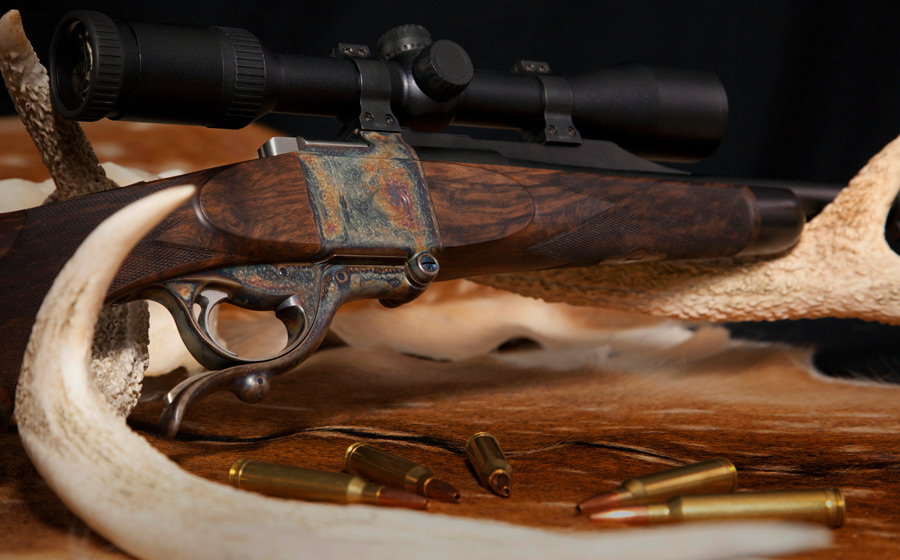
Glen understood that the Farquharson was a late nineteenth century design and that it had been improved on over the decades of its production, but there was still room for improvement. He got rid of the old style internal hammer and in its place put in a coil spring striker. Glen also did not follow the Ruger No. 1 style of attaching the fore end but instead used a truncheon block to attach it directly to the barrel with minimum interference between the fore end and the action. It’s a formula that worked. These rifles shoot sub MOA and reviewers have them putting down half MOA groups. In short these Soroka-Farquharson’s shoot much better than an original Gibbs-Farquharson, F.C. Selous would have loved one. Glen decided to call his new design the Soroka 07.

Soroka Rifle Company are based in New Zealand, home of some of the best mountain hunting in the world. They make two models of the Soroka 07, the Alpine Express and the African Express. The specifications taken from Soroka Rifle Company’s web site are as follows:-
Alpine Express
Features:
Either 26” standard or magnum contour match grade barrel with integral fore-end escutcheon and quarter rib recoil lug – stainless steel or chrome- moly options;
High grade Turkish walnut stock with shadow line cheek piece and ebony for-end tip, choose from our wood library or supply your own;
Quarter rib with dovetails suitable for Talley rings;
Steel grip cap;
Barrel band and rear sling swivel;
Barrel finish- rust blue, hot blue, or satin black chrome; and,
Action finish – rust blued, hot blued or French gray.
Standard Chamberings: – 7×57 (or 275 Rigby), 270 win, 280 Rem, 280 Ackley; 30/06, others
by request.
Magnum Chamberings: – 7mm Remington mag; 7mm Dakota; 7mm STW; 300 WSM; 300 win mag; 300 H&H mag; 300 Dakota; 300 Weatherby mag; and 300 Ultra mag. Others by request.
Weight (bare)
Standard Chamberings: – 6.75- 7.25lbs, depending on the wood density.
Magnum Chamberings: – 7.5 – 8 lbs, depending on the wood density.
Overall length – 43.25” with 26” barrel and 13.75” length of pull.
African Express
Features:
Magnum contour match grade barrel cut to your length with integral fore-end escutcheon and quarter rib recoil lug – stainless steel or chrome- moly options;
High grade Turkish walnut stock with shadow line cheek piece and ebony for-end tip, choose from our wood library or supply your own;
Quarter rib with dovetails suitable for Talley rings;
Steel grip cap;
Barrel band and rear sling swivel;
Barrel finish- rust blue, hot blue, or satin black chrome; and,
Action finish – rust blued, hot blued, or french gray.
Chambered for: .375 H&H, .404 Jeffery, .416 Rem. Others by request.
Weight (bare) – 7.5 – 8.5 lbs, depending on your instructions and the density of the wood.
Overall length – 43.25” with 26” barrel and 13.75” length of pull.

You will find the Soroka Rifle Company’s web site if you click here.
You will find their brochure in downloadable PDF format if you click here.
You will find a review by professional hunter Ron Spomer if you click here.
The Soroka 07 truly is the twenty first century offspring of the Gibbs-Farquharson of the nineteenth century. It combines the pure aesthetics of the original with just the right improvements to make this arguably the best single shot rifle ever created, period.
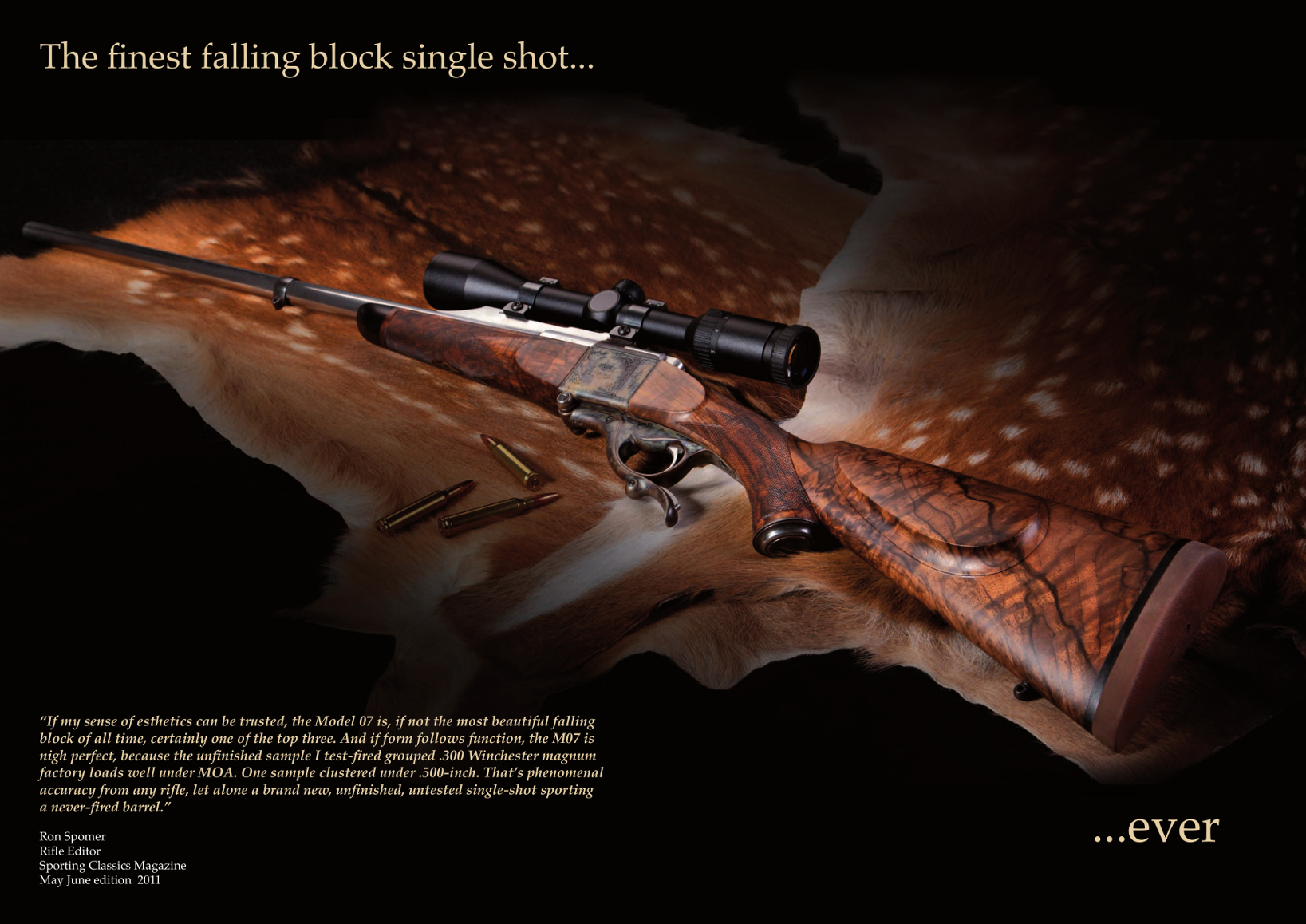
(All pictures courtesy the Soroka Rifle Company except where otherwise marked).

Jon Branch is the founder and senior editor of Revivaler and has written a significant number of articles for various publications including official Buying Guides for eBay, classic car articles for Hagerty, magazine articles for both the Australian Shooters Journal and the Australian Shooter, and he’s a long time contributor to Silodrome.
Jon has done radio, television, magazine and newspaper interviews on various issues, and has traveled extensively, having lived in Britain, Australia, China and Hong Kong. His travels have taken him to Indonesia, Israel, Italy, Japan and a number of other countries. He has studied the Japanese sword arts and has a long history of involvement in the shooting sports, which has included authoring submissions to government on various firearms related issues and assisting in the design and establishment of shooting ranges.

